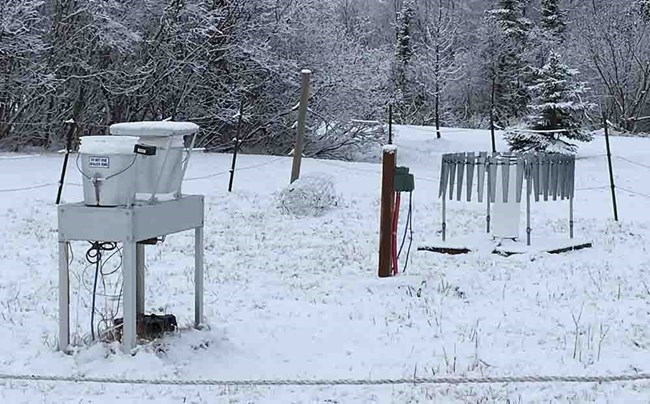
Air quality affects scenic and natural resources in parks, including surface water, visibility, vegetation, wildlife, and soils. This inventory focused on indicator pollutants regulated under the Clean Air Act. You can explore air quality information in parks.
Air quality assessments for national parklands are overseen by the National Park Service Air Resources Division (ARD). The ARD focuses their assessments on several air quality indicators, including visibility, particulate matter, ozone, and atmospheric deposition. Find air quality conditions and trends by park.
Atmospheric deposition is the process whereby airborne pollutants, such as nitrate and sulfate, reach the earth. Deposition consists of both wet and dry components. Wet deposition occurs when pollutants are transferred to the ground, usually by rain and snow but also by fog and mist. Wet deposition has been monitored in North America since 1978 by the National Atmospheric Deposition Program’s National Trends Network (NTN). The NTN currently includes 261 active monitoring sites, one of which is operated by the Southwest Alaska Network and Katmai National Park and Preserve. This site (known as AK97) is located in King Salmon, Alaska, and is one of only five active NTN sites in the state. It is also the furthest west of all 261 sites.
Last updated: February 2, 2022
